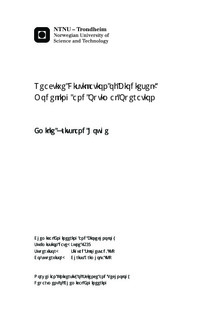Reactive Distillation of Biodiesel: Modelling and Optimal Operation
Master thesis
Permanent lenke
http://hdl.handle.net/11250/2353805Utgivelsesdato
2013Metadata
Vis full innførselSamlinger
Sammendrag
This thesis modifies an already existing dynamic Matlab Simulink model to correlate with a Hysys model from a similar research. The models are concerned with the reactive distillation for production of biodiesel from linoleic esters of soybean oil through transesterification reactions. The Matlab model was constructed using molar balances, Francis? weir equation for the liquid dynamics, no vapour dynamics, kinetics according to the rate law and temperature estimations according to the UNIQUAC method. Very similar results were presented for the two models besides the Matlab being of simpler origin, and having no inclusion of energy balances compared to the Hysys model. Both a dynamic Simulink and a DAE-system model were produced, with the DAE system having reduced simulation time and an additional steady-state version.The steady-state version of the DAE-model was used for optimisation according to the Skogestad Economic Plantwide Optimisation principles. The first part of the systematic top-down/bottom-up method was applied, focusing on the economic control. Four distinct active constraint regions were identified; varying with the feed flowrate and molar ratio. The first region could not be solved with regard to quality constraints, while the second had maximum flowrate and maximum impurity of total glycerol in the biodiesel product as the active constraints. The third region had active constraints of maximum temperature in the reboiler and maximum impurity of glycerol. The fourth region would not be solved by the Matlab fmincon interior-point algorithm, and applies very high feed ratios outside of the range normally applied by biodiesel production processes.
